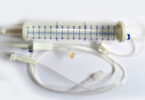Myofascial Release is a technique that serves to generate mechanical stimuli in soft tissues that brings significant achievements.
Myofascial Release, then we can define it as a technique that uses stainless steel tools, which serve to generate mechanical stimuli in soft tissues, bringing with it a series of benefits.
It is also a therapy technique that is often used during a massage.
Its main objective is to recover the functional balance of the body.
This therapy focuses on pain that comes from the myofascial tissues, that is, the tough membranes that wrap, connect and support muscles.
Certainly, myofascial is a condition of regional pain of muscular origin, located in a muscle or muscle group, which consists of a tense band, increased in consistency, painful, identifiable by palpation and within which the trigger point (PG) is located. .
Therefore, the myofascial trigger point is a nodule that is palpable on the skin and is located in a taut band of muscle. This area is painful to direct compression, stretching and contraction of the muscle in which it is located.
Inflammation is also said to occur when the thick band of tissue on the bottom of the foot (fascia) becomes overstretched or overstretched. This can be painful and make walking more difficult.
The Rheumatologist is a specialist in muscle and joint conditions.
To diagnose chronic myofascial pain, the specialist will ask if you have had a recent injury, where the pain is located, how long you have had the pain, what makes the pain increase or decrease, and if you have other symptoms.
Likewise, the specialist will perform a physical examination.
He should know that this pain can sometimes be confused with radicular pain and therefore a correct assessment is important. It is considered chronic when it lasts more than six months.
TYPES OF FASCIAS:
- Subcutaneous fascia.
- Deep fascia.
- Visceral fascia.
- Parietal fascia
SYMPTOMS:
- Muscle tension related to stress,
- Bad posture.
- Repetitive movements at work.
- Muscle weakness.
- In some cases, the cause of myofascial pain is unknown.
- Plantar fasciitis usually causes stabbing pain on the bottom of the foot, near the heel.
- Pain, stiffness, tissue fatigue and reduced performance and function.
- Sedentary lifestyle, since the lack of use of the muscles tends to weaken them, making them vulnerable to different types of injuries.
- Falls or direct and indirect blows.
- Loading free weights excessively and without correct posture.
TREATMENT:
- Instrumental therapy: It consists of the treatment of mechanical dysfunctions by destroying adhesions and irritating corpuscles using hooks applied to the skin. Through them, myofascial tension and muscle load are improved, increasing tissue mobility.
- Instrumental physiotherapy: is an advanced technique that uses specialized instruments to effectively treat a variety of musculoskeletal conditions.
- Through manual release techniques with sustained movements and pressure, the physiotherapist manages to release the fascial muscular system, thus recovering the functional balance of the body.
- complement during warm-up through sports training.
- Medications such as ibuprofen or naproxen help reduce pain and inflammation.
FONT
https://avanfi.com/liberacion-miofascial-con-fisioterapia/









